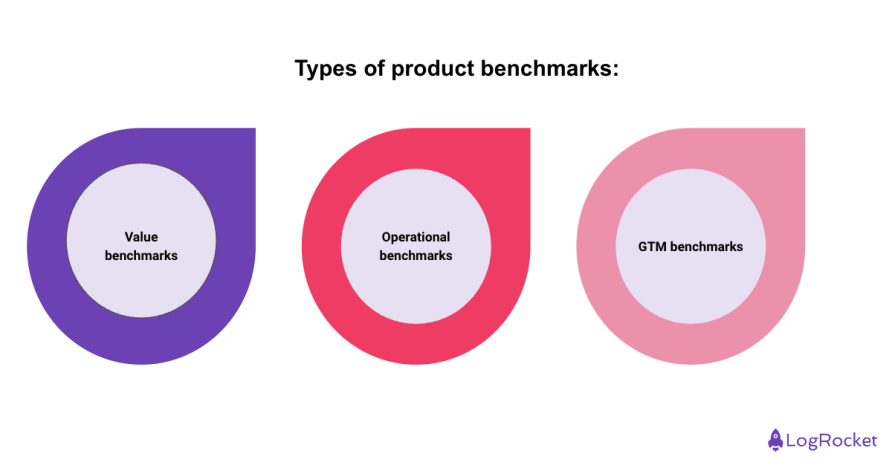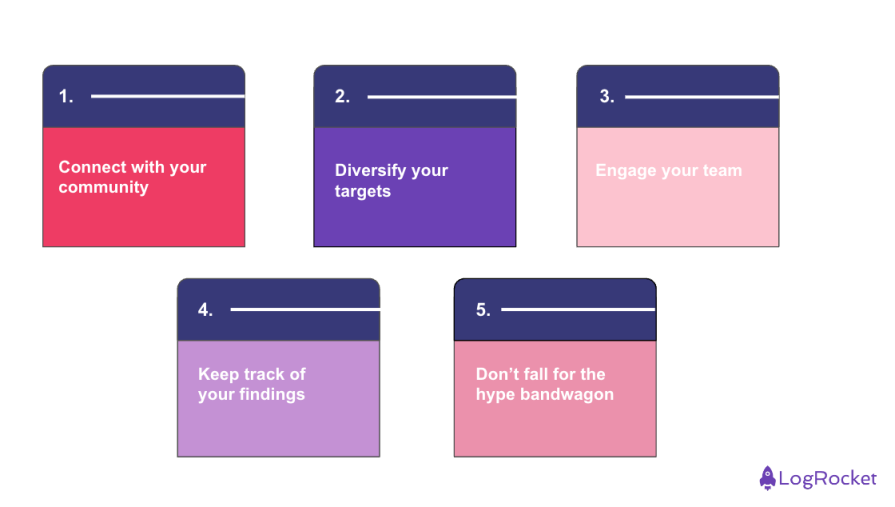Benchmarking can seem like one of those words like “brainstorm” that you use over and over again until it means nothing. That said, benchmarking plays a pivotal role in creating a continuous discovery culture.

Instead of just replicating the abundance of resources benchmarking, this article seeks to up your discovery game and show you how to fit it into your value proposition as a product manager.
Benchmark was originally an expression from civil engineering. Its popularity exploded in the 80s when white collar academics assumed ownership over the word. Regardless of the application, benchmark involves defining the standard by which everything else should be measured.
Product managers should, in theory, focus on de-risking business decisions in favor of user needs. You do this through discovery, and since it’s a role rather than a process, it needs to be continuous. Benchmarking, on the other hand, isn’t a continuous effort. It’s a punctual observation, usually when you feel the need to close a gap.
You might benchmark competition when losing clients to try and understand why. It’s often a reactive process rather than a proactive one. However, this means you’re always playing catch-up instead of getting ahead.
Discovery and benchmark aren’t opposites and you can bridge these two concepts together. Try and think of continuous discovery as a sequence of short benchmarks.
The traditional concept of continuous discovery, as popularized by Teresa Torres in her blog “Product Talk” and her book “Continuous Discovery Habits,” primarily emphasizes customer interviews, testing, and stakeholder assessment as discovery sources. While not incorrect, this triad might not be sufficient for all scenarios. It’s an excellent approach for startups in blue oceans, but many people work in larger companies navigating various shades of red oceans.
For B2B businesses, user interviews can be suboptimal since often no single individual has a complete understanding of the client’s value expectations. In large corporations, aligning stakeholders can be problematic as you might be pitting adversaries against each other. Conducting tests on legacy platforms can sometimes be nearly impossible.
In these common situations, benchmarking becomes the most effective way to conduct continuous discovery. Without it, cannot run any type of discovery, relegating your role and your value as an individual contributor to a mere backlog manager.
Benchmarks come in different flavors depending on the context. That said, most fall into three smaller categories:

When performing competitive benchmarks, you essentially do feature comparison. This focuses on solutions instead of problems. If delivering on your clients express requests can be problematic, copycating your competitors can be even worse.
When NFTs were a thing, a lot of companies rushed to replicate it just because the entire market was doing so. It was hip and disruptive and any competitive benchmark would have a clear result: create NFTs! After less than a year, they were laughing stock.
Value benchmarks, on the other hand, look for what users perceive as valuable. It’s more than just identifying what features people engage with. You want to know what problems are finding solutions.
Google’s idea of replicating the iPhone app store was one of the reasons why it beat Microsoft’s mobile OS, which never prioritized its app store very much. Uber wasn’t built around cab companies, but with the Amazon proposition of frictionless payment and quick on demand delivery. Oral-B won’t get any clients with their new AI powered toothbrush, but Canva will surely come out on top by incorporating AI image editing to its suite.
To know if you’re on the right track, touch base with similar companies and learn from the collective experience, instead of trying to carve your own path. Probably the most successful example of this benchmark was the Spotify model, which consolidated the now somewhat outdated structure of multidisciplinary squads and similar stack tribes.
In startup ecosystems across the world, young companies keep in constant communication with each other to share and assess how well their ways of work perform. Good practices multiply, failed experiments fade out, and everybody wins.
As for larger corporations, instead of trying to copy the nimble and flexible startups, operational benchmarks can help you find middle grounds between your consolidated culture and other mature cultures. Your company might not be able to benefit from the aforementioned squads, but you should still keep an eye on your peers.
Go-to-market (GTM) strategies are usually led by product marketing managers, but when those are absent, it’s normally the product manager’s job to fill in the gap. GTM can make or break a good product rollout, and months of investment and effort can go down the drain if you fail to connect with your target audience.
Similar to value benchmarks, rather than replicating what your competitors do, GTM benchmarks understand how people consume and engage with sales. What are the best techniques to convert a sale, to qualify a lead, or to expand the top of the funnel?
If you treat benchmarking as a one and done project, you’ll hardly reap the continuous benefits it can provide. Benchmarking should become an organic part of your routine, and these insights might help you do just that:

It can be difficult to find users to interview, but you can find a community much easier. Connect with people from your industry, other product managers, and people from your product and market. Share insights and listen to theirs as well. Answer and ask questions, go to events, and build an information network that passively feeds you benchmark intelligence.
As it was the case with so many examples above, don’t go looking for answers only inside your bubble. Burst it and try to find parallels with your business elsewhere. If you work at a B2B SaaS product, try and understand your client’s realities. If you work at a B2C service business, look for how people consume other types of digital services. Look for similarities in other countries, cultures, age ranges. Maximize the opportunities to find insights and you’ll never run out of those.
Two heads think better than one. Instead of holding the weight of a benchmark on your shoulders alone, bring the team together and energize them. The engineers can look for new tech and applications, the designer can come up with visual or usability innovations, and the intern can share things they’ve learned from academia… no matter who, if they belong to your team, they can act as an extension of your inquisitive benchmark brain.
This is actually a no-brainer, and it applies the same for continuous benchmarking or continuous discovery. Either way, it’s important to cover it: document your findings. If not to help you keep track of everything, proper benchmark documentation creates an opportunity for other parts of the business to engage and share their own thoughts. Moreover, having a history of your learnings in a single repository can help you draw parallels that would’ve been overlooked otherwise.
Relying 100 percent on benchmarks can inadvertently put you in a hype train, and you’ll think you’re doing an amazing job when in fact you’re jeopardizing your value proposition to users. Always be critical of what everybody is doing and don’t let go of your product sense just because “everybody is doing it.”
Benchmarking can be an eye roller when someone uses it. Regardless, it has the opportunity to drive value in a culture adverse to traditional discovery, or serve as a strong complement to provide context and sidelines for your continuous discovery practice.
Try to embrace benchmark as a routine rather than a project. Especially when more productized methods hit a culture wall, benchmarking allows you to evolve into a more strategic PM. Don’t settle for pushing backlog items in a sprint, benchmark and supercharge your product value.
Featured image source: IconScout

LogRocket identifies friction points in the user experience so you can make informed decisions about product and design changes that must happen to hit your goals.
With LogRocket, you can understand the scope of the issues affecting your product and prioritize the changes that need to be made. LogRocket simplifies workflows by allowing Engineering, Product, UX, and Design teams to work from the same data as you, eliminating any confusion about what needs to be done.
Get your teams on the same page — try LogRocket today.

A practical framework for PMs to use AI in ideation without sacrificing judgment, strategy, or decision quality.

A practical five minute revenue estimation method to help product managers compare ideas, drop low impact features, and prioritize smarter.

A practical guide for PMs who want to stop being bottlenecks, delegate smarter, and lead teams effectively with a clear ownership framework.

Stop letting unreliable data block features. Treat data as inventory to track quality, ownership, and ship with confidence.